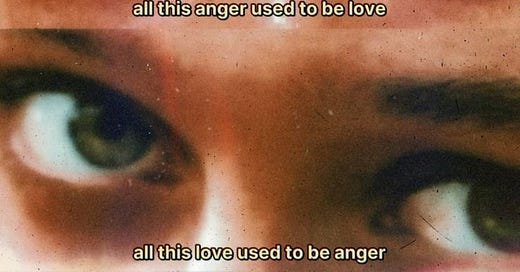1.
I have recently been reading Kate Zambreno’s “Appendix Project.”
In the first essay, she writes about her mother’s death and coming to terms with it. She died quite young, and Zambreno finds herself reawakened by the loss when she is pregnant with her first child, fifteen years later. There’s a repetition to grief, a cyclicality that spurs without confrontation. This “signifies the way that mourning moves through time, how it circles and returns.” She reads Roland Barthes’ Mourning Diary and writes, “Mourning is an interruption in time. A deferral from the present tense. And yet it’s also durational, about the day.”
What’s so interesting about grief, about mourning, is that there is no compass. No clarity to when you will feel it. It will interrupt, distract and diffuse at its own will. What’s also interesting is that “healing” doesn’t necessarily mean you’ll be without grief, and part of the work is accepting that this state is a part of the human ordinance; it is an exhaustive reality to being alive.
I feel like a lot of my life has been about comprehending grief — mine and my family’s — and all the things left unsaid. Only just this Sunday, I had to reiterate to my father that I had been sexually abused by my mother. He was silent as I spoke, as I detailed some of my realities, about how her abuse had shaped me, and why I left home so young. It’s why my body is covered in tattoos, a sign of reclamation, I tell him. He never contests, but he never adds anything, either. He surely never apologizes, never interrogates. Not that he should, but I wonder what he’s thinking in those moments. Can he fully comprehend my grief? I don’t think so, but that doesn’t hurt me, or limit mine, anymore. It doesn’t dismiss that I feel what I feel, or that it is present inside of me, left like an indelible mark. What’s strange is that even though the grief is still there, its stronghold, inevitably, has weakened with time.
I don’t think of myself as a sad person, though sadness is an emotion that erupts inside of me often. Yet, it never sinks me. I stay afloat through the tides, miraculously. Despite the languidness of grief’s push and pull, I remain buoyed through it all. But it still remains, the back and forth. How I can circle around a memory again and again and find new meaning, new membranes of hurt. Or, rather, new ways of being within it. Tender and profound ways of grappling with it.
Zambreno writes that mourning is layered and discontinuous. “Time is also layered.” And so is mourning. I find myself returning to the site of a wound often to re-contextualize and understand it differently.
2.
I understand this through astrological terms. I know this is a Cancerian trait, and I am Cancer in the first house, with four planets, including Chiron, that sits there emboldening every emotional breakdown. Cancers chew and chew to release the memories. Sometimes I relive something and have to speak to it again and again. I think I chose writing, as I have often said, because of this, this loneliness of feeling. How so often people can’t entirely validate what we feel, especially if we feel a lot. So the safest thing is to protect the feeling and valorize it by putting it onto the page.
Keep reading with a 7-day free trial
Subscribe to How To Cure A Ghost to keep reading this post and get 7 days of free access to the full post archives.





